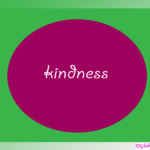
There are some people who exercise daily – it’s a lifestyle choice that reaps a lot of benefits. But there are some people who dread the thought of exercising or just lack the motivation. If you just don’t feel like exercising, for whatever reason, then it’s time to get off that couch and start doing some yoga.
This Introduction to Yoga is a great place to start because it does not demand too much. It may seem like you’re not accomplishing a lot with some of the simple poses, but the long-term effects, if practiced regularly, are beneficial to your health and well-being. It doesn’t matter what age you are, anyone can practice yoga.
Life seems to be moving so fast these days, but no matter how busy it gets, try to find the time to include some form of exercise. We’re not yoga experts, but we have found that yoga has increased our flexibility and stability. For those of you who would like to explore yoga for the first time, these simple poses are a great start! It doesn’t matter what age you are, anyone can practice yoga. Take it slowly and enjoy the benefits.
What is yoga?
Yoga originated in India and has been around for approximately 6,000 years. The word yoga, from the Sanskrit yuj means to yoke or bind. The practice originated as a philosophy to bind, to unite, mind, body and spirit through breath control, meditation and physical postures. Yoga improves your physical and mental health. If you wish to read more about yoga in-depth, you can google it and read some more. Let’s start off with some “do’s” and “don’ts” and a few simple stretches for those who have not practiced yoga before. Look for future posts so you can start to expand your regimen.
Safety
Like any form of exercise or fitness regimen, injuries can occur. Here are some safety tips to keep in mind:
1. Be mindful of your body’s limits. If you move into a pose and it hurts, stop. Yoga should never hurt.
2. Use props, chairs, a wall, yoga blocks and other items to keep your balance, if needed.
3. Stretch and bend as far as you can without force.
4. Keep a slight bend in your knees.
The Benefits of Yoga
The health benefits of yoga are numerous. Unlike stretching or fitness routines, yoga connects the movement of the body and mind to the rhythm of our breath. It increases your flexibility, strength and energy and enhances your muscle tone. It improves your balance, concentration and overall health. It can reduce stress and help bring peace of mind. This simple Introduction to Yoga routine, takes no more than 20 minutes to half-hour each day. Try practicing daily or at least three days a week to start, you will begin to see a difference in how you feel.
The Mind and Breath
 If you feel anxious before you begin your practice, sit quietly in a chair and observe your body, posture, mind and breath. Or, lie down on the floor in Savasana or Corpse pose.
If you feel anxious before you begin your practice, sit quietly in a chair and observe your body, posture, mind and breath. Or, lie down on the floor in Savasana or Corpse pose.
Try to still your mind – a most difficult thing to do. Over time, you will begin to see how you can empty most, if not all, of your thoughts and just focus on your yoga. Breathing is an essential part of yoga. While you sit or lie quietly before starting your practice, notice your breath and breathing pattern. Most of us breathe in and out in our chest area and never deep into our diaphragm. Take deep breaths in and out slowly and it will calm you. When you are calm, you can be present in your practice.
Getting Started
You really don’t need much to get started – just the desire and motivation to learn yoga. You will need some leggings or loose trousers, or shorts, and a t-shirt that’s not too baggy. Shoes are not needed, but you can wear yoga shoes which are light and have traction at the bottom. Buy your own mat, even if you are taking classes at a yoga studio where mats are provided. Sign up for a class which can be helpful since your yoga teacher can assist you if you are not doing something properly. Or, you can access some great classes on line or by purchasing CDs. Here are a few tips to keep in mind before getting started:
1. Try not to eat 2-3 hours before practice. You have to twist, turn and bend in yoga so you don’t want to be full before your practice. If you must eat something, do so no less than 30 minutes before class. Light snacks such as yogurt, fruit, nuts, or a small glass of fruit juice are recommended.
2. In some large yoga classes, there will be people at various stages in their practice – beginner, intermediate and advanced. Do not compete with or compare yourself to others. Try to do yoga with the intention of bringing peace and harmony to your life and you will reap the health benefits along the way.
3. Pay attention to your yoga instructor or position yourself in the back of someone who you would like to follow.
4. Always wear clean clothes and be mindful of those around you.
5. Shop around; take a class or two at various yoga studios before signing up. If you cannot find a class near you, or wish not to be part of a class, you certainly can buy a good yoga CD or find free instructions online and learn by yourself.
6. Remember to clean your yoga mat regularly with warm water and a natural cleaning solution. The mat can then be towel- or air-dried.
Take Pride in Your Progress
The more often you do yoga, the better you become at it and the sooner you reap the benefits. One of the first things you’ll notice is increased flexibility. Take note of your progress and be proud of yourself!
Some Simple Poses to Get You Started
Here are a few simple stretches to get you started. As you will notice below, some poses have the Hindi and English names, but some have just the English name.
Tadasana (Mountain Pose)
 – Place your feet shoulder-width apart, parallel, and facing forward with equal weight on both feet.
– Place your feet shoulder-width apart, parallel, and facing forward with equal weight on both feet.
– Let your arms fall to your side, or bring your palms together in front of the heart center in prayer position.
– Count to 5 slowly while filling your diaphragm with air which is the prana (life force) that flows through you. Let it out slowly through your nose on the count of 10. Repeat 5 times.
– If your hands were in prayer position, bring them slowly down to your sides.
Utthita Tadasana (extended hands in Mountain Pose)

Inhale and slowly bring hands up in the air at the count of 5.
Ardha Chandrasasa (Half Moon pose right)
 Exhale and facing front, keep your arms straight and lean to the right. Stay in this position breathing in and out for a slow count of 8 seconds.
Exhale and facing front, keep your arms straight and lean to the right. Stay in this position breathing in and out for a slow count of 8 seconds.
Utthita Tadasana (extended hands in Mountain Pose)

Inhale and come back to center.
Ardha Chandrasana Left (Half Moon Pose left)

Exhale, and facing front, keep your arms straight and lean to the left. Stay in this position breathing in and out for a slow count of 8 seconds.
Utthita Tadasana(extended hands in Mountain Pose)

Inhale and come back to center.
Tadasana (Mountain Pose)
 – Slowly bring your arms down to the side.
– Slowly bring your arms down to the side.
– Place the feet shoulder-width apart, parallel, and facing forward.
– Fill your diaphragm with air slowly at the count of 5, then and let it out slowly through your nose for a count of 10.
Victory Squat

Separate your legs, bend your knees and exhale as you raise your arms out to the side, elbows bent. Stay in the pose for 20 seconds; less if you cannot stay that long. Do only what your body is allowing you to do.
Five Pointed Star
 – Gently straighten your knees and inhale as you bring you arms out to the side.
– Gently straighten your knees and inhale as you bring you arms out to the side.
– Stretch your arms out long; spread your finger tips.
– Exhale as you slowly bring your arms down to the side.
Tadasana (Mountain Pose)
 – Bring the feet back to center, shoulder-width apart, parallel, and facing forward with equal weight on both feet.
– Bring the feet back to center, shoulder-width apart, parallel, and facing forward with equal weight on both feet.
– Bring your arms down to the side or palms together in front of the heart center in prayer position
– Fill your diaphragm with air at the count of 5, then let it out slowly through your nose at the count of 10. Do this for 1 minute.
Repeat these poses about 5 times if this is your first time doing yoga. When you have finished, lay down on your yoga mat or floor and come into Child’s Pose.
Balasana (Child’s Pose)
 This is a good pose to stretch out the back. If you cannot sit with your legs folded in this position, sit up straight with your legs wide apart and reach out to the center with your arms stretched out long. Lean up against a couch or wall if you need to.
This is a good pose to stretch out the back. If you cannot sit with your legs folded in this position, sit up straight with your legs wide apart and reach out to the center with your arms stretched out long. Lean up against a couch or wall if you need to.

Savasana or Corpse Pose is a great way to end your stretches or yoga practice. Lie down on your mat, legs and arms slightly apart and rest. Breathe deeply in and our of your diaphragm.
Stay for as long as you want.
How do you feel after these simple poses with your first Introduction to Yoga? You should feel relaxed. Try doing these poses for a few days before moving on to my second blog post, Yoga Practice – Sun Salutation.
See you there!








Comments